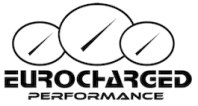Results 1 to 4 of 4
-
08-21-2013, 01:00 PM #1
 Member
Member






- Join Date
- Sep 2011
- Location
- Seattle, WA
- Posts
- 115
- Rep Points
- 262.8
- Mentioned
- 3 Post(s)
- Rep Power
- 3
Old vs New horsepower ratings. good read!
Muscle Car Horsepower – How Exaggerated Was It?
Jim Koscs
August 13, 2013
 1970 Mustang Boss 302 (photo courtesy of Sicnag)
1970 Mustang Boss 302 (photo courtesy of Sicnag)
Forty years after the end of the “classic” muscle car era, there is still some confusion over horsepower ratings, especially how they relate to today’s cars. Let’s try to clear it up.
Prior to 1972, American carmakers used the SAE (Society of Automotive Engineers) “gross” measurement of horsepower. Gross meant the figure was taken from an engine running on a test stand, with no air cleaner assembly, accessories or exhaust system connected.
By 1971, carmakers began reducing compression in many engines in order to meet upcoming emissions requirements and to use unleaded fuel. General Motors and Chrysler began advertising both gross and SAE net figures in 1971, derived from an engine tested with air cleaner assembly, accessories or exhaust system connected.
The net ratings, which were applied across the board for 1972, must have been a shock to some customers. Suddenly, muscle cars appeared to lose 100 hp or more.
For example, the Corvette’s optional LT-1 350 cu. in. small block V-8 had 370 gross hp in 1970 (with 11:1 compression), then a 330 hp gross rating (with 9:1 compression) for 1971-1972 with a 255 hp net rating. The mighty Chrysler 426 cu. in. Hemi kept its high compression and 425 hp gross rating for 1971 and showed 350 net hp.
Jim Campisano, editorial director of Muscle Mustangs & Fast Fords and Super Chevy magazines, has revisited the classic muscle car horsepower topic numerous times over the years. The magazines have compared old and new muscle cars and have also put classic models on a chassis dynamometer to record rear-wheel horsepower.
“Rear wheel horsepower was at least 30 percent lower than the reported gross figure, in some cases even more,” Campisano said.
Some Super Chevy readers must have been stunned to see that an LS6 Chevelle SS, with 450-hp rating, put down 288 rear wheel hp in the dyno test. That would have put a net hp rating at around 350 hp for that legendary big block.
You don’t need a dynamometer to estimate net horsepower for classic muscle cars, or to check claims of current models. Roger Huntington, the renowned technical writer who penned articles for many car magazines into the 1980s, developed a formula to show the relationship between quarter-mile performance and power output. Others have refined those formulas and developed calculators, in which you can use performance figures and vehicle weight to get estimated hp. (To check hp figures for this article, we used calculators at http://www.stealth316.com/2-calc-hp-et-mph.htm.)
Keep in mind that some muscle cars came specially prepped from press fleets, sometimes with non-factory supertunes. That’s one reason that making comparisons using vintage road tests can be sketchy. Different axle ratios, testing methods, drivers, test conditions and other variables also affect results.
But we can try anyway.
In 1970, Car & Driver tested a Pontiac Firebird Formula 400, which had a 330 gross hp rating and was equipped with a fairly tall 3.07 axle ratio. They recorded a 14.78-second ET at 98.9 mph. A 1970 Trans Am with the same engine, but with a 4-speed and a 3.55 axle ratio, was tested by Muscle Car Review magazine in 1995. That car burned the quarter-mile in 14.68 sec. at 97.17 mph, quite close to the C&D test 25 years before. Pontiac gave that engine a 255 net hp rating for 1971.
Now, let’s add a later model into the mix. When C&D tested a 1979 4-speed Trans Am with the emissions-controlled W72 400 engine, the one with a 220-hp net rating and the “T/A 6.6” decal on the shaker hood scoop, it ran a 15.3 second ET at 96.6 mph. That car had a 3.23 axle ratio. As a drag racer will tell you, the mph figure is the better indicator of horsepower than ET. So, the 35 net hp deficit from the 1971 engine seems accurate, and not nearly as bad as some might have thought three decades ago.
Some myths still persist, though, one being that the 1969-1970 Ford Mustang BOSS 302, which had a 290 hp gross rating, really had “around 400 hp.” Vintage road tests show mid-to-high 14-second ETs at 94-97 mph for a car weighing about 3500 pounds with a driver and test gear. That’s about 100-150 pounds less than the 400-powered Firebirds cited above. Given those figures, the BOSS 302’s 290 gross hp rating seems accurate, pegging net hp closer to 240.
Contrast that with the 2012-2013 Mustang BOSS 302.
Ford rates the modern BOSS with its DOHC 5.0-liter V-8 at 444 hp. Car & Driver, driving one the way most drivers would (not powershifting), recorded a 12.8-sec. ET at 113 mph. Muscle Mustangs & Fast Fords, with hot shoe Evan Smith banging off full-throttle powershifts and the car running on drag radials, scorched the quarter-mile in just 12.07 sec. at 114 mph.
Those similar mph figures easily substantiate the car’s 444 net hp rating and leave no doubt that the 1969-1970 BOSS 302 was at least 200 net hp below that.
To be clear, debunking myths does nothing to tarnish the place that classic muscle cars hold in our hearts and garages.
“We still love the old ones,” said Campisano. “They’re cool looking, fun to drive and fun to look at. It’s just a different performance world today.”
From Haggerty.com
-
08-21-2013, 01:07 PM #2
-
08-22-2013, 11:38 AM #3
 Member
Member







- Join Date
- May 2012
- Posts
- 288
- Rep Points
- 411.6
- Mentioned
- 21 Post(s)
- Rep Power
- 5
-
08-26-2013, 12:36 PM #4
Moved to general automotive.
BRAND NEW IN BOX 991.2 standard/non-pse SPW cat bypass pipe for sale - $899 shipped
New generic 991.2 PSE bypass pipes - $499 shipped




 Quote
Quote














Welcome...
Let's point and laugh at Rhino08